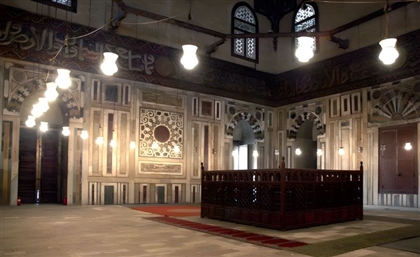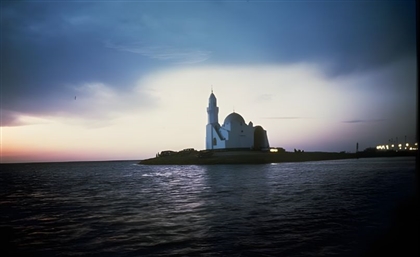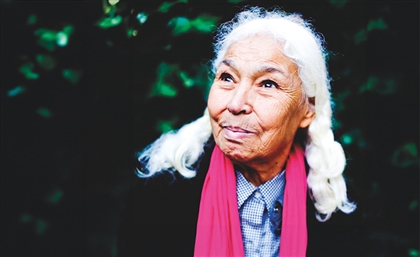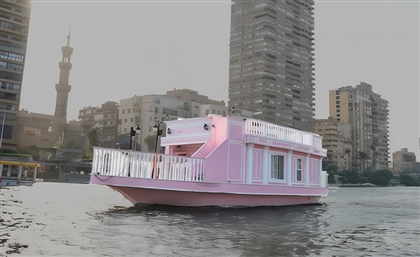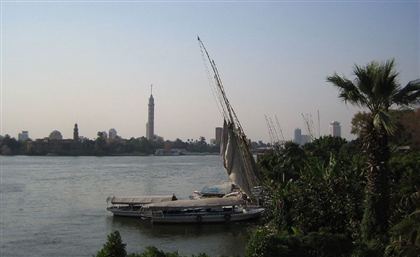Heritage Sites at Risk in Gaza
From the Roman to the Ottoman, here’s a look at Gaza’s diverse cultural heritage.
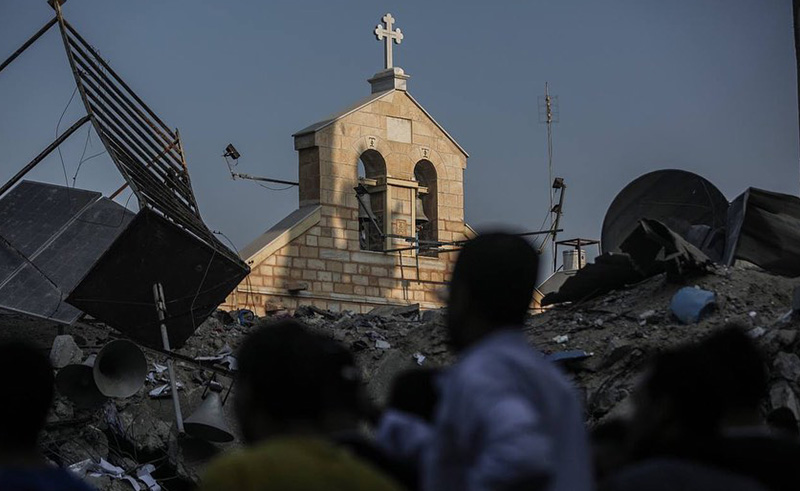
Gaza has been home to a number of civilisations throughout its history. The Palestinian city was a key stop-over for merchants and pilgrims, and its heritage sites stand as testament to the diversity of cultures, from the Romans and the Ottomans, to the Crusaders and the Mamluks.
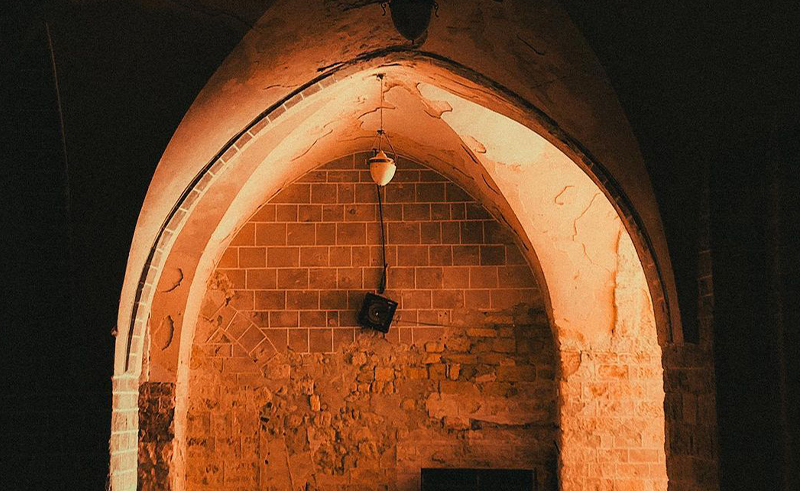 But these sites, and the historical records they host within the gates of the Old City, are at risk of being destroyed, with the Church of Saint Porphyrius having most recently been bombed by Israel’s occupation forces. In 2014, Al Omari Mosque - also known as the Great Mosque of Gaza - lost its roof in similar circumstances.
But these sites, and the historical records they host within the gates of the Old City, are at risk of being destroyed, with the Church of Saint Porphyrius having most recently been bombed by Israel’s occupation forces. In 2014, Al Omari Mosque - also known as the Great Mosque of Gaza - lost its roof in similar circumstances.
Church of Saint Porphyrius
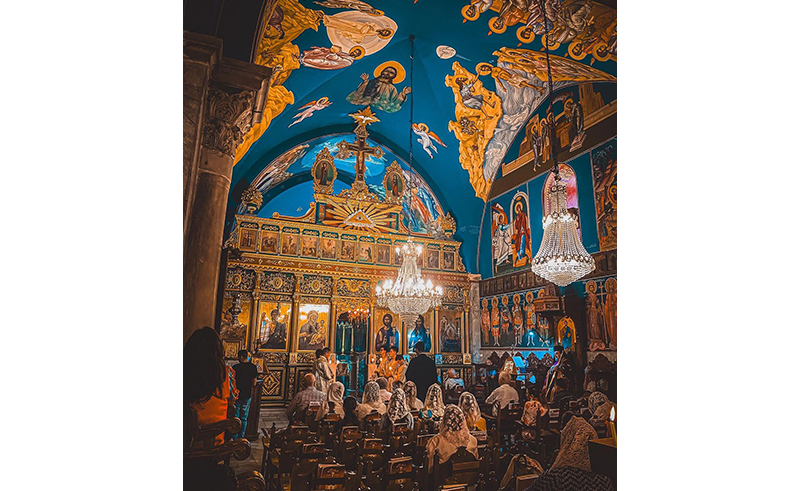 The Church of Saint Porphyrius is the oldest active church in Gaza, and is believed to be the third oldest in the world. It’s where Saint Porphyrius died and was buried in 420 CE. Located in the Old City, adjacent to the Great Mosque of Gaza, the church’s architectural features take after its neighbouring mosque, which was formerly the Cathedral of Saint John the Baptist. On October 19th, 2023, four Israeli missiles struck its halls, which had been serving as shelter to civilians.
The Church of Saint Porphyrius is the oldest active church in Gaza, and is believed to be the third oldest in the world. It’s where Saint Porphyrius died and was buried in 420 CE. Located in the Old City, adjacent to the Great Mosque of Gaza, the church’s architectural features take after its neighbouring mosque, which was formerly the Cathedral of Saint John the Baptist. On October 19th, 2023, four Israeli missiles struck its halls, which had been serving as shelter to civilians.
Great Mosque of Gaza
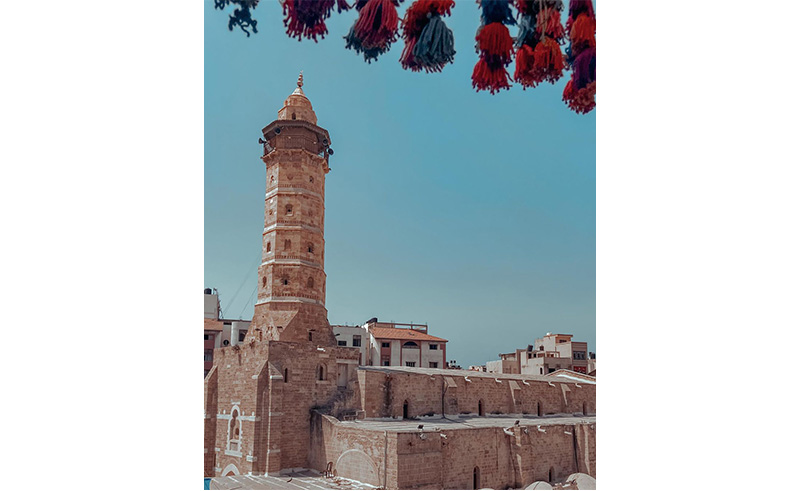 Originally constructed in the 7th century during the Umayyad period, the mosque has undergone multiple reconstructions and renovations over the centuries due to damage caused by various conflicts and natural disasters. The current structure is believed to have been rebuilt in the 11th century during the Fatimid period and has undergone subsequent renovations and expansions.
Originally constructed in the 7th century during the Umayyad period, the mosque has undergone multiple reconstructions and renovations over the centuries due to damage caused by various conflicts and natural disasters. The current structure is believed to have been rebuilt in the 11th century during the Fatimid period and has undergone subsequent renovations and expansions. 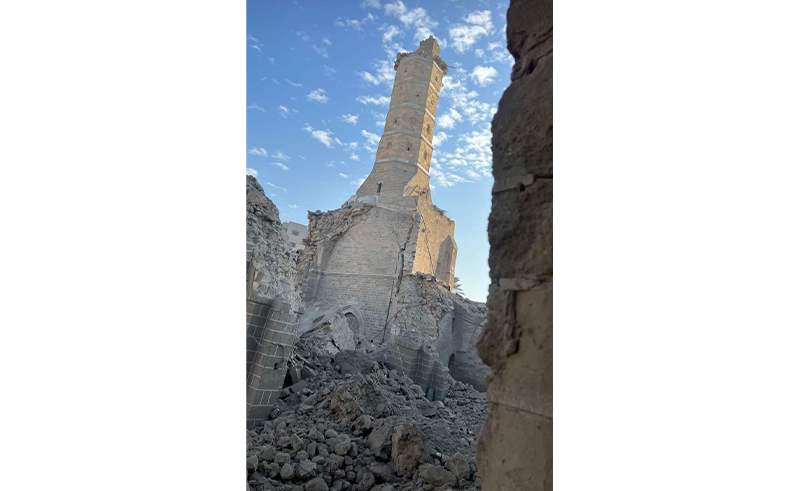 It was hit by an Israeli airstrike in 2014, which destroyed most of its roof and flattened one of its wings. However, its 13th century minaret survived and still stands as a landmark. Update: On December 8th, an Israeli airstrike targeted the Great Mosque of Gaza, severely damaging it.
It was hit by an Israeli airstrike in 2014, which destroyed most of its roof and flattened one of its wings. However, its 13th century minaret survived and still stands as a landmark. Update: On December 8th, an Israeli airstrike targeted the Great Mosque of Gaza, severely damaging it.
Qalaat Barquq
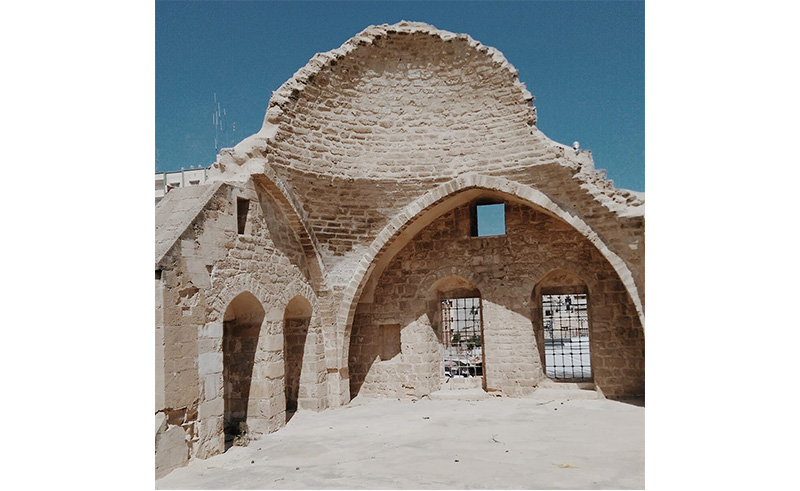 Constructed during the reign of the Mamluk Sultan Barquq in 1387, Barquq’s Fort is located in Khan Yunis. Today, only the main facade of the fort and one of its towers survive, while most of the Islamic fort’s structure was converted for other uses.
Constructed during the reign of the Mamluk Sultan Barquq in 1387, Barquq’s Fort is located in Khan Yunis. Today, only the main facade of the fort and one of its towers survive, while most of the Islamic fort’s structure was converted for other uses.
Saint Hilarion Monastery
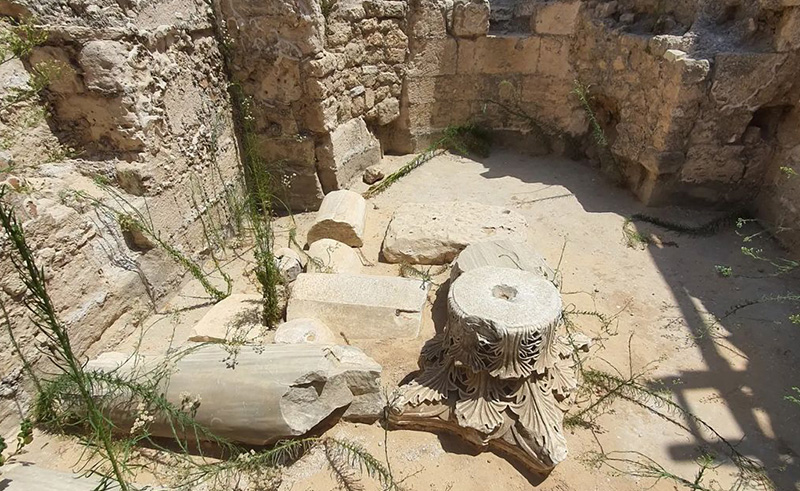 Also known as Tel Umm Amer, the Monastery of St. Hilarion stood for four centuries, from the Roman Empire to the Umayyad Dynasty. The first of its buildings was erected in 400 CE, making it one of the largest monasteries in the Middle East.
Also known as Tel Umm Amer, the Monastery of St. Hilarion stood for four centuries, from the Roman Empire to the Umayyad Dynasty. The first of its buildings was erected in 400 CE, making it one of the largest monasteries in the Middle East.
Al Ghussein House
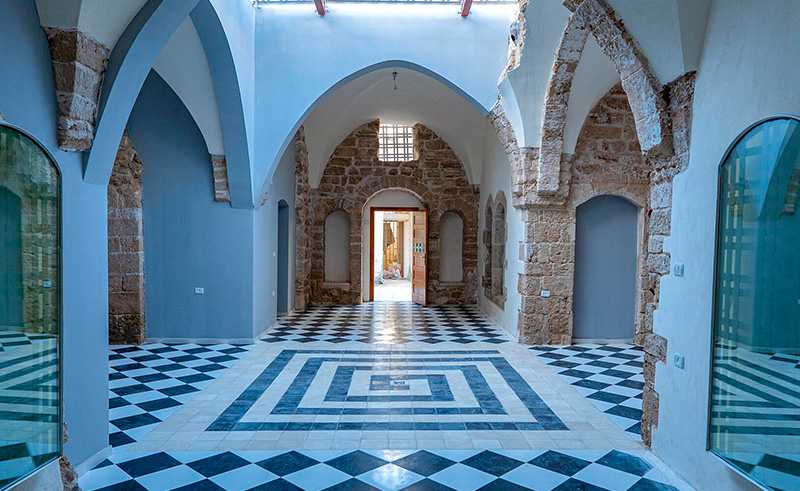 Al Ghussein House was built around 1800, hosting the British consul and his family during the British Mandate in Palestine. Destroyed over time, the house was restored by the Goethe-Institut in 2020, preserving its cultural heritage. Today, it functions as a cultural centre, and an example of traditional building techniques in Gaza during the 18th and 19th centuries.
Al Ghussein House was built around 1800, hosting the British consul and his family during the British Mandate in Palestine. Destroyed over time, the house was restored by the Goethe-Institut in 2020, preserving its cultural heritage. Today, it functions as a cultural centre, and an example of traditional building techniques in Gaza during the 18th and 19th centuries.
Qasr Al Basha Museum
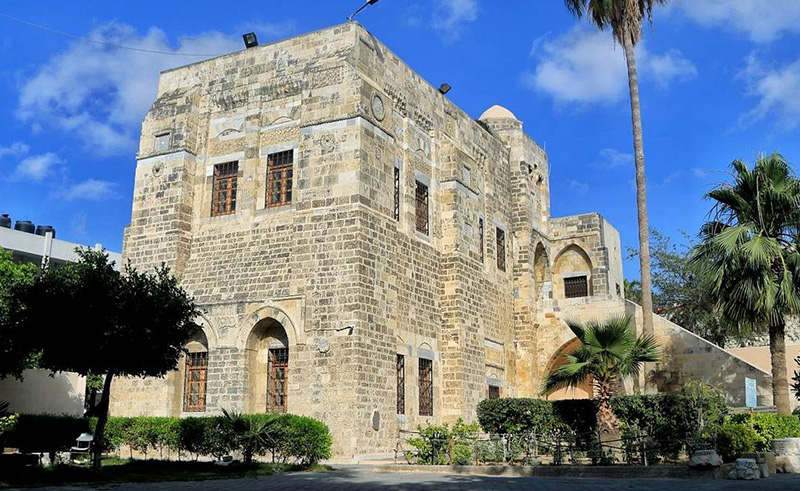 Located on Al-Wahda St. in Al Daraj Quarter, Qasr Al Basha dates back to the Mamluk era. It’s known as ‘The Pasha’s Palace’ because it was Napoleon’s choice of accommodation when passing through the city in 1799. It was built by the Mamluk Sultan Zahir Baybars in the mid-13th century and was expanded in the Ottoman period. Today, it’s an archaeological museum that tells the history of the many civilisations that passed through Gaza.
Located on Al-Wahda St. in Al Daraj Quarter, Qasr Al Basha dates back to the Mamluk era. It’s known as ‘The Pasha’s Palace’ because it was Napoleon’s choice of accommodation when passing through the city in 1799. It was built by the Mamluk Sultan Zahir Baybars in the mid-13th century and was expanded in the Ottoman period. Today, it’s an archaeological museum that tells the history of the many civilisations that passed through Gaza.
Hamam Al-Samara
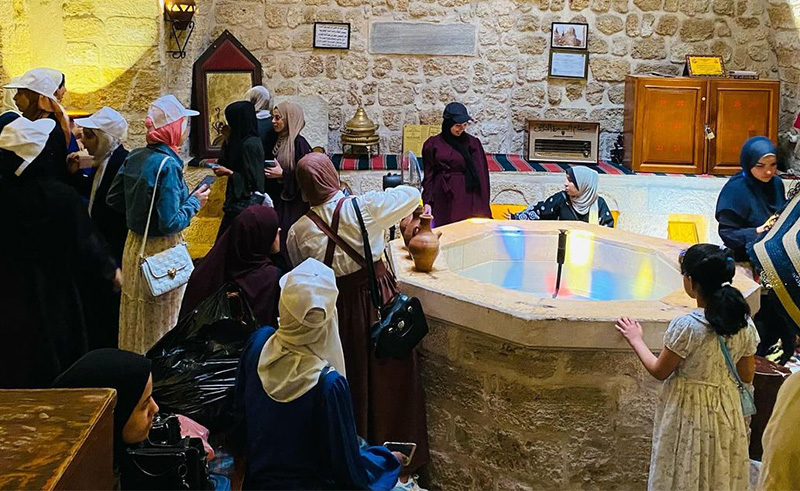 Hamam Al Samra is one of many Ottoman footprints in Gaza. The Turkish bathhouse is located in Al Zaytoun Quarter in the Old City. Out of five original bathhouses, Hamam Al Samra is the only one that continued to function through time. Many believe that its history dates back to pre-Islamic times, before being restored in 1320 by the Mamluk governor Sanjar Al-Jawli.
Hamam Al Samra is one of many Ottoman footprints in Gaza. The Turkish bathhouse is located in Al Zaytoun Quarter in the Old City. Out of five original bathhouses, Hamam Al Samra is the only one that continued to function through time. Many believe that its history dates back to pre-Islamic times, before being restored in 1320 by the Mamluk governor Sanjar Al-Jawli.
Sayyed Hashem Mosque
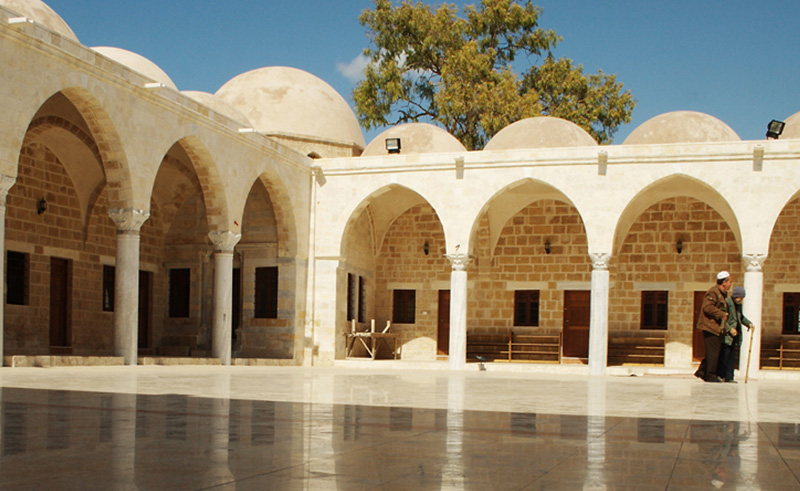 Located in Al-Daraj Quarter, Sayyed Hashem Mosque is believed to host the tomb of Prophet Muhammad’s grandfather Hashem Bin Abdulmanaf, who died in Gaza during a trading voyage. The tomb is believed to be situated under the dome of the mosque.
Located in Al-Daraj Quarter, Sayyed Hashem Mosque is believed to host the tomb of Prophet Muhammad’s grandfather Hashem Bin Abdulmanaf, who died in Gaza during a trading voyage. The tomb is believed to be situated under the dome of the mosque.








